The celebrated Avenue des Champs-Élysées is synonymous with glitz and glamour. The Avenue and its district are part of the Voie Triomphale (Triumphal Way): the Historical Axis.
The Champs-Élysées along the Historical Axis of Paris
The magnificent vista runs through some of Paris’ most celebrated monuments and squares: from the Louvre and the gardens of the Tuileries to La Défense, passing through the Champs-Elysées, which are dominated by the famous Arc de Triomphe. The Grand-Palais and the Petit-Palais are grand additions to the area from La Belle Epoque period.

The wide processional avenue had been in Le Nôtre’s mind when the urban architect designed the Tuileries Gardens back in the 17th century. But it was the Duke of Antin who pursued the Grand Cours or ‘Perspective’ up to the mound of Chaillot (Butte de Chaillot) where the Arc de Triomphe now stands majestically. In the 18th century, the promenade was bordered with trees formally planted in a straight line and English gardens were laid out on each side, from the Place de la Concorde up to the Rond Point des Champs-Élysées.

As a famous landmark along the Historical Axis, the Champs-Élysées plays a major role in opening the outlook from the Louvre towards the West, towards the setting sun.
Its current name was adopted in 1709 and derived from the Elysian Fields, a place of final resting for the souls of the heroic and the virtuous in Greek mythology. But the thoroughfare on the axis is nowadays known as “la plus belle avenue du monde” (the most beautiful avenue in the world). The long avenue of nearly two kilometres is 70m wide, therefore not the widest in Paris (Avenue Foch is 120m wide with its central gardens).
Description of the Champs-Élysées
“Les Champs” (as the Parisians called the avenue) is a glamorous thoroughfare cutting through Paris’ most exclusive district where tourists, strollers and businessmen mingle.
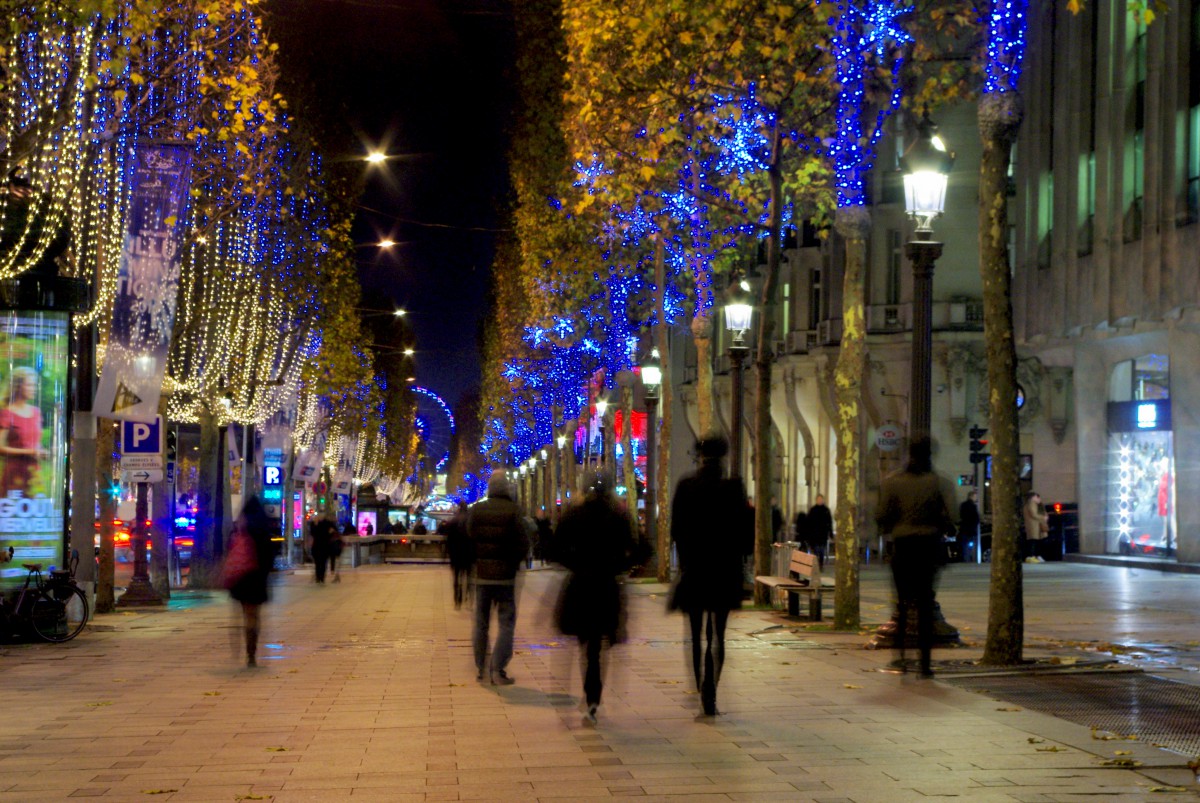
The lower section of the avenue, from the Place de la Concorde to the Rond Point des Champs-Élysées, is bordered on each side by the English gardens designed by the architect Hittorff (1838). Consisting of lawns, beautiful conker trees and shrubberies, they blend harmoniously with the pleasure pavilions.
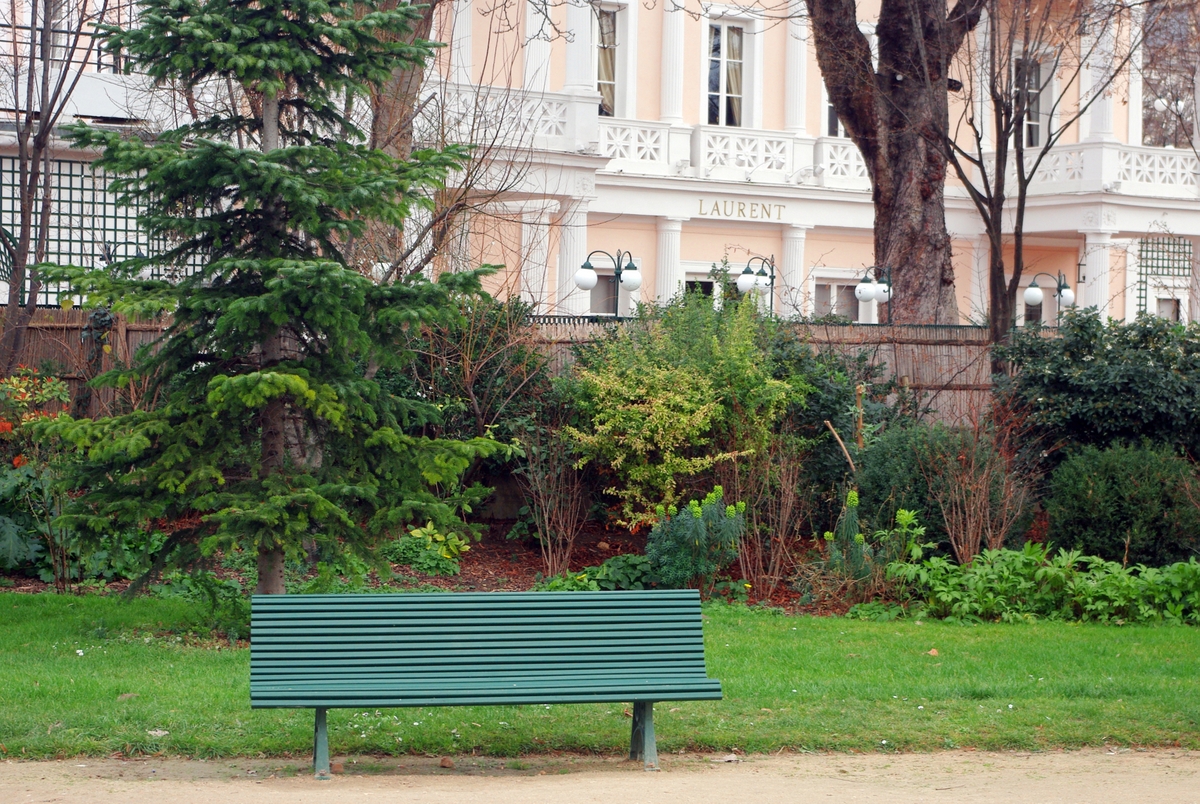
The gardens (‘Jardins des Champs-Élysées‘) are divided in rectangular areas called ‘Carrés‘ (squares). On the north side of the avenue are the carré des Ambassadeurs (close to the Place de la Concorde, including the Espace Cardin), the carré de l’Élysée (in front of the beautiful railings of the Palais de l’Élysée, the residence of the French President), and the carré Marigny (including the Marigny Theatre, the Laurent restaurant and the open-air marionette theatre for children).

On the south side are the carré du Géorama (including the famous Ledoyen restaurant) and the grand carré du Battoir (which is now bordered by the Petit Palais and the Grand Palais).
Place Clemenceau

Today Place Clemenceau is a busy square where the Champs-Élysées is crossed by the Avenue de Marigny and the Avenue Winston Churchill. It is bordered by the Grand Palais and the Petit Palais.
Above the entrance of the metro station “Clemenceau” stands the statue of General Charles de Gaulle.
Across the square, on the Petit Palais’ side, lies the statue of George Clemenceau, commissioned by François Cogné in 1932.
Further down the Avenue Winston Churchill, under shady trees, is another statue of an illustrious man: Winston Churchill.
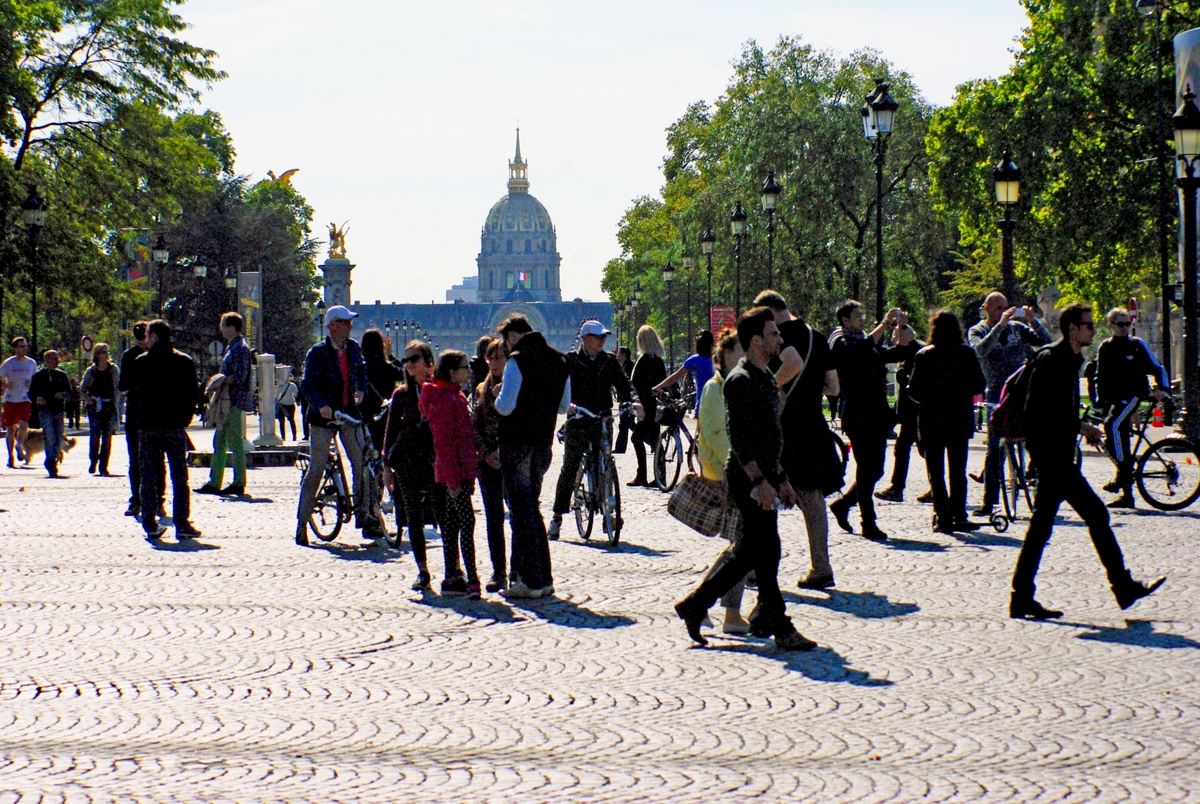
From the Place Clemenceau, another ‘Grand Perspective’ opens towards the Hôtel des Invalides, passing through the Grand Palais and the Petit Palais, the Pont Alexandre III and the Esplanade des Invalides. Because it was completed during the 3rd French Republic, it was commonly known as the “Republican Axis”, echoing the older “Historical Axis” along the Champs-Elysées.

The Rond Point des Champs-Élysées and up towards the Arc de Triomphe
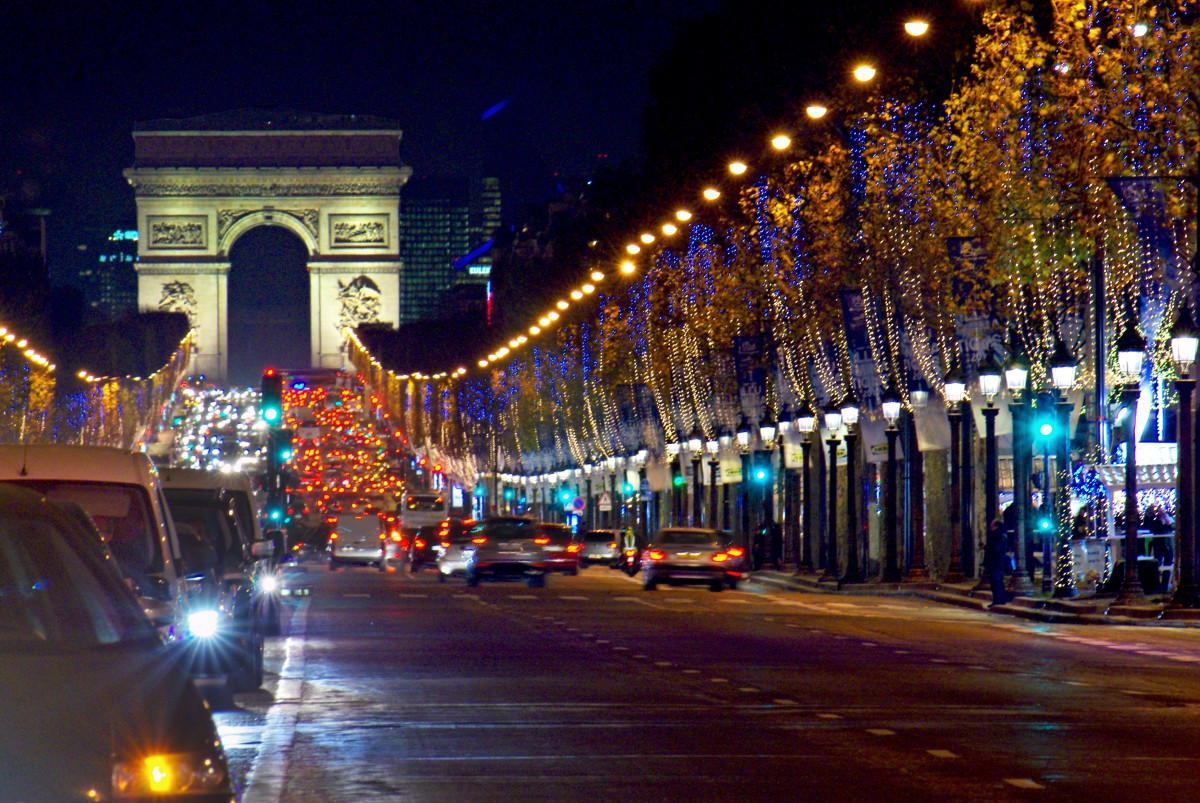
The Rond Point des Champs-Élysées marks the border between the shady greenery of the Jardins des Champs-Élysées and the built-up area.
Until the mid-1850s, the area of the Champs-Élysées was not really a popular place for the Parisian elite to stroll. It was an unsafe zone of open parklands where brigands and criminals used to hide. When the Allies occupied Paris in 1814, they based their soldiers along the Axis and it is reported that two years were needed to repair the damage.
But the atmosphere started to change when it became the property of the City of Paris in 1828. In the Second Empire (under the reign of Napoleon III) the avenue became attractive to the bourgeoisie thanks to the installation of gas lighting and various embellishments: footpaths, fountains and flowerbeds.
Once the upper-class society built themselves mansions along its length, the Champs-Élysées’ fame rapidly grew and cafés and theatres started to open. The ‘Hôtels Particuliers’ (mansions) have all disappeared today except that of number 25, opposite the Citroen car showroom which has recently undergone a stylish makeover. The “Hôtel de La Païva” was built between 1856 and 1865 and is renowned for its beautiful yellow onyx staircase, which is said to be unique in the world.
This upper part of the Avenue des Champs-Élysées follows the slope leading to the Arc de Triomphe and is bordered by buildings housing various top fashion boutiques, offices and cinemas, synonymous with Parisian glitz and glamour. The list is long as it embraces fashion, luxury specialties, cultural items, cafés and restaurants: Louis Vuitton, Zara, Cartier, the Disney Store, Virgin Megastore, FNAC, Séphora, UGC cinemas, Citroen, La Durée, Fouquets’ etc.
The area just off the Champs-Élysées towards the River Seine is known as the “Triangle d’Or” (Golden Triangle), where the exclusive fashion boutiques are found: Dior, Chanel, Prada… along Rue François 1er et Avenue Montaigne.
Events in the Champs-Élysées
The Champs-Élysées attracts more than 1.2 million people a day at the weekend and it is no surprise that the prestigious street accounts for the highest rental and asking prices in Europe.
But most of all, the avenue provides the best location for major public events.
The ‘Champs’ is to this day a major popular rallying point at times of national crisis, where huge gatherings, often spontaneous, have occurred on several occasions: the liberation of Paris on the 26th August 1944, the victory of the 1998 FIFA World cup by the French team or the New Year’s Eve popular gatherings where Champagne flows freely!

The French Republic uses the Champs-Élysées for big military parades on Bastille Day every 14th July. Another major event organised there is the final leg of the Tour de France (since 1975), and the lighting of the Christmas lights from the end of November to January.

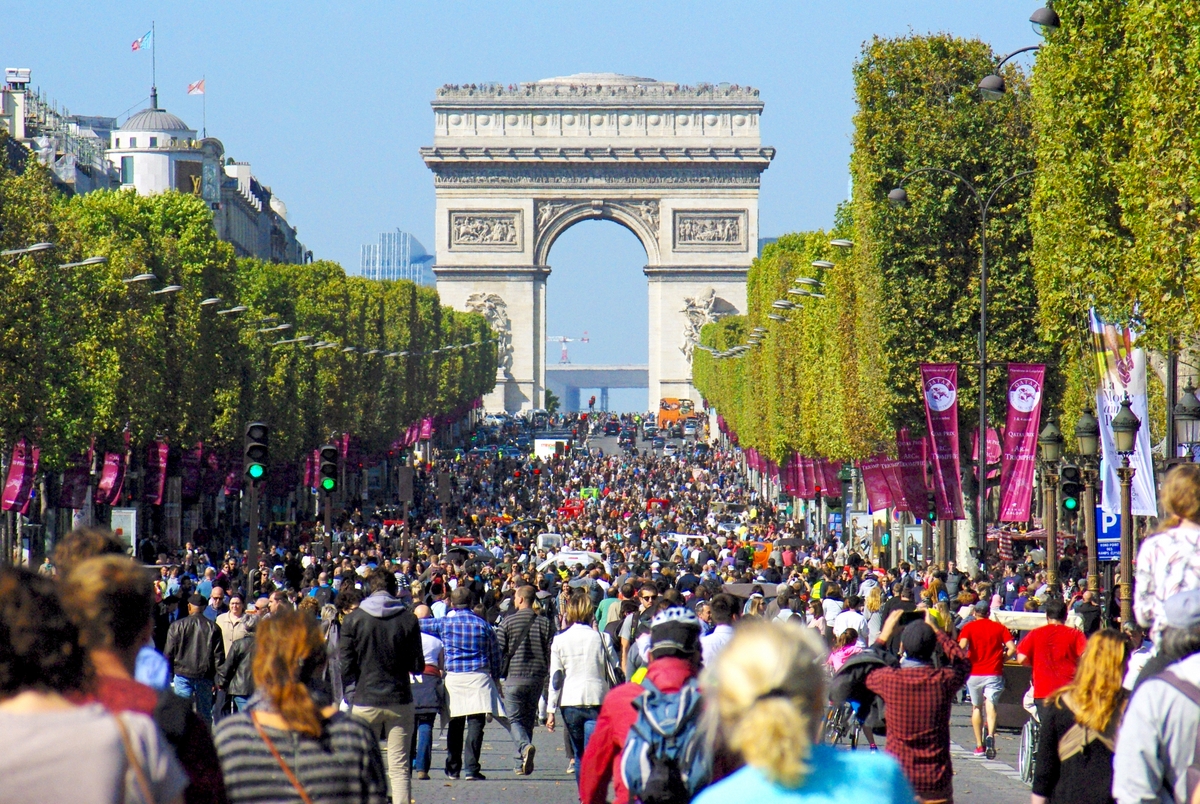



Ahhh; Paris. There is no other City in the World even close to Paris. No matter where else I go when I visit Europe; I make sure I spend a few days with my love Paris.
Thank you! Indeed, there’s nothing like Paris! 🙂